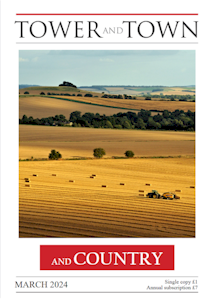

Tower and Town, March 2024 (view the full edition) (view the full edition)Making Space For NatureFollowing the 2010 publication of Professor Lawton's report Making Space for Nature, Marlborough Downs farmers were horrified to learn that countless native wildlife species were in decline or, at best, just about holding their own. Consequently, when Defra launched a competition inviting proposals to pilot new ways of working for wildlife, the group were able to secure funding to show how a farmer-led, bottom-up approach could result in real gains for the habitats and species found on the downs. We were determined to show that by being allowed to make our own decisions about wildlife management on the downs, together we could accomplish great and wide-reaching benefits. When the initial funding ran out, the farmers were determined to continue and are still going strong today, funded partly by the farmers themselves, and partly by various grants and donations. The Space for Nature project is owned by the farmers and their supporters. We have invested a lot into it and are therefore committed to the responsibility of ensuring that our achievements are sustainable. Wildlife conservation is not all about money and we have shown that it is undertaken far more enthusiastically and effectively by people who are genuinely motivated at a personal level, rather than merely incentivised by financial reward. We have also discovered that by working together we can create a vibrant community that is able to achieve so much more than we would alone. We've seen how what started out as a fairly straightforward wildlife project has grown into something that has social, health, and economic benefits as well as bringing about better awareness, understanding and management of our local biodiversity. 'Space for Nature' achievements:
Jemma Batten |